Jan Svoboda. Magnetic Techniques for the Treatment of Materials
Подождите немного. Документ загружается.


540 CHAPTER 6. INDUSTRIAL APPLICATIONS
Figure 6.60: Distribution of heavy non-ferrous metals, per mass and per value,
in a scrap metal mix (adapted from [S91]).
to electronic scrap treatment [B46, G26]. In view of large density dierences
between non-magnetic or weakly magnetic metals to be separated, only modest
separation selectivity and a rather simple design of the FHS separator is re-
quired. It is fairly easy to design a ferrohydrostatic separator that can generate
apparent densities exceeding 10 000 kg/m
3
, required to float, for instance, lead,
in a modestly magnetic (e.g. M
v
= 0.02 T) ferrofluid.
A separator shown in Fig. 6.61 can treat up to 1 t/h of scrap material and
it can be further scaled-up to double this throughput. Recovery of 95% of most
heavy non-ferrous metals can achieved, with purity ranging from 98 to 100%.
[M24]. A typical example of a copper concentrate obtained by FHS is shown in
Fig. 6.62. Inclusion of ferrohydrostatic separation in the flowsheet for sorting
of heavy non-ferrous metals is illustrated in Fig. 6.63.
As has been discussed in Section 5.6, there are two basic types of separators
with magnetic fluids. A ferrohydrostatic separator with constant apparent den-
sity of ferrofluid along the vertical axis produces two products, namely float and
sink. The selectivity and accuracy of separation in this type of separator can
be very high. On the other hand, separators that use paramagnetic liquids or
separators with ferrofluid with wedge-shaped pole-pieces generate a distribution
of apparent density along the vertical. Although it is possible, at least in the-
ory, to obtain several density products in one pass of a material through such a
separator [e.g. A44], selectivity is inevitably limited. Interparticle interactions,
distribution of density of the materials to be separated, and a continuum of the
apparent density of the magnetic fluid along the vertical axis are some of the
reasons that make this approach impractical.
While it is unlikely that the latter approach will find industrial applica-
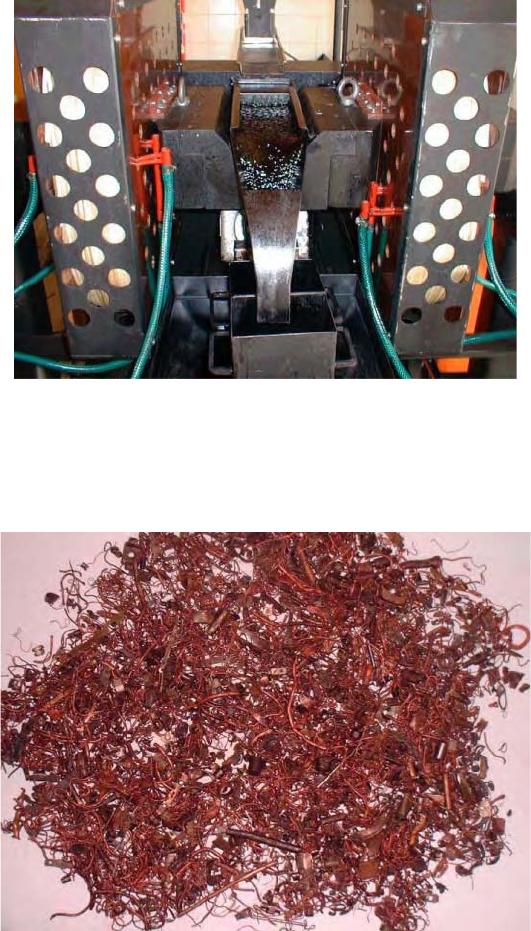
6.6. RECOVERY OF METALS FROM WASTES 541
Figure 6.61: A pilot-plant-scale ferrohydrostatic separator for sorting of heavy
non-ferrous metals.
Figure 6.62: A photograph of the - 12 mm copper concentrate obtained by FHS
as a sink product at the density of 8200 kg/m
3
and a float fraction
at 10 300 kg/m
3
[M24].
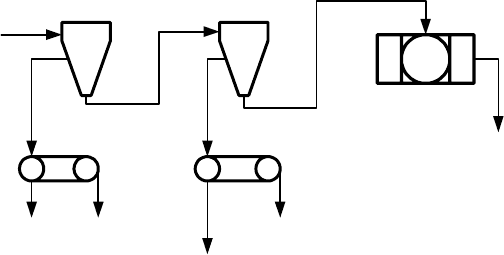
542 CHAPTER 6. INDUSTRIAL APPLICATIONS
Non-ferrous
material
DMS 2.0 sg
< 2.0 sg
> 2.0 sg
DMS 3.0 sg
> 3.0 sg
< 3.0 sg
ECS
ECS
Plastics
Rubber
Magnesium
Thin gauge Al
Cu wire
Stones
Thick gauge Al
Zn 7.0 sg
Bronze 7.4-8.9 sg
SS steel 7.9 sg
Brass 8.4-8.7 sg
Copper 8.9 sg
Lead 11.3 sg
FHS concentrates
FHS
Figure 6.63: A flowsheet for sorting non-ferrous metals into individual metal
concentrates, using FHS.
tion, sorting of non-ferrous metals by ferrohydrostatic separation holds a signif-
icant promise. A successful production-scale demonstration of this technology,
availability of ferrohydrostatic separators with a throughput of 2 to 5 t/h, and
availability of technical-grade ferrofluid at reasonable cost are prerequisites for
introduction of this technology into the recycling process.
6.7 The applications of ferrohydrostatic separa-
tion
The range of potential applications of ferrohydrostatic separation is extensive
and, in view of the unique capabilities of the FHS technology, this technique
can change conventional practices of materials treatment. The main limitation
is, however, the cost of ferrofluid, limited throughput of the existing separators
and rather poor e!ciency of separation of particles smaller than 500 m. The
viability of every application will be determined mainly by the losses of the
fluid, its cost compared to the value of the products of separation, and by the
e!ciency of of the ferrofluid recycling, if it is used [S92].
The FHS technology is presently being used, on industrial scale, for the
recovery of gold and other platinum-group metals and in the diamond industry.
On laboratory and pilot-plant scale, the technology is being applied to the
recovery of non-ferrous metals from scrap, as discussed in Section 6.6.2, and
to the treatment of wastes and tailings, slags, coal analysis and recovery of base
metals.
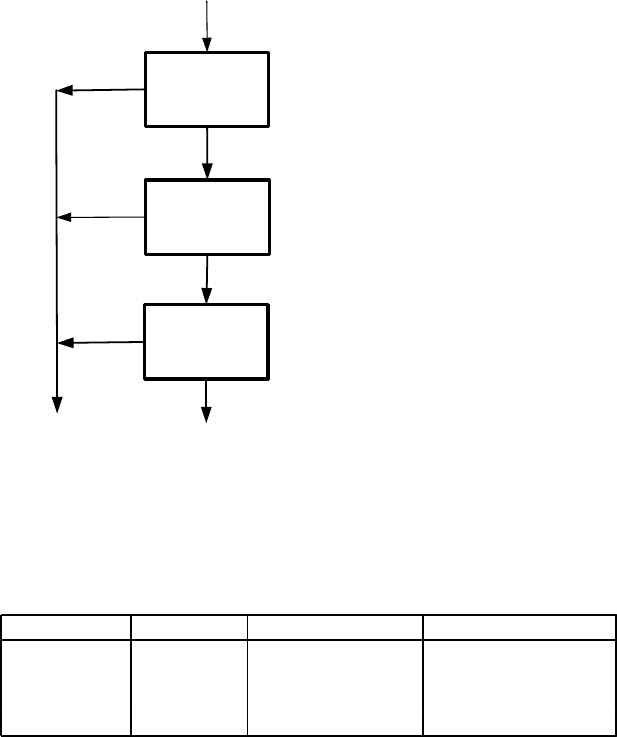
6.7. THE APPLICATIONS OF FERROHYDROSTATIC SEPARATION 543
LIMS
HIMS
FHS
Gravity concentrate
Mags
Non-mags
Non-mags
Au concentrate
Final tails
Mags
Mags
Throughput: > 25 kg/h
Recovery of gold:
Total: 98.6%
in FHS: 99.5%
Grade: 97 - 99% Au
Particle size: - 5 mm + 40 um
Ferrofluid loss: 5 l/t
Figure 6.64: Recovery of gold by FHS at Aldanzoloto, Russia (adapted from
[S55]).
Table 6.29: Beneficiation of gold-bearing alluvial sands by FHS [G27].
Product Yield [%] Grade [g/t Au] Recovery [% Au]
Feed 100 473 100
Concentrate 0.1 452 000 95.5
Tailings 15.7 78 2.6
Magnetics 84.2 11 1.9
6.7.1 Recovery of gold and other platinum-group metals
At least fifty ferrohydrostatic separators, based either on electromagnets [S55],
or permanent magnets [S54], are in operation in the territories of the former
Soviet Union. The separators are used to recover gold from gravity concentrates
and to treat previously accumulated tailings after the amalgamation of the gold
concentrates. A typical flowsheet of the treatment of the gravity concentrate is
shown in Fig. 6.64. Table 6.29 summarizes the results of the final concentration
of black alluvial sand by an electromagnet-based GMUO FHS [G27].
Tables 6.30, 6.31 and 6.32 oer a detailed summary of the results of benefi-
ciation of table gold concentrates in individual stages as outlined in Fig. 6.64.
Results of the concentration of gold from tailings in the Amur Region (Rus-
sia), using permanent-magnet based FHS, are shown in Table 6.33.

544 CHAPTER 6. INDUSTRIAL APPLICATIONS
Table 6.30: Beneficiation of the gold gravity concentrate by a low-intensity mag-
netic separator (Severvostokzoloto Co.), B = 0.13 T.
Product Yield [%] Grade [g/t Au] Recovery [%Au]
Feed 100 222146 100
Magnetics 31.81 1502 0.22
Non-magnetics 68.19 325074 99.78
Table 6.31: Beneficiation by a high-intensity magnetic separation of the non-
magnetic fraction from LIMS (Severvostokzoloto Co.).
Product Yield [%] Grade
[g/t Au]
Recovery [%Au]
per stage overall per stage overall
Feed 100 68.19 325074 100 99.78
Magnetics 59.47 40.55 1864.6 0.34 0.34
Non-magnetics 40.53 27.64 799248 99.66 99.44
Table 6.32: Concentration of gold from the non-magnetic fraction of a high-
intensity magnetic separator by FHS (Severvostokzoloto Co.).
Product Yield [%] Grade
[g/t Au]
Recovery [%Au]
per stage overall per stage overall
Feed 100 27.64 799248 100 99.44
Au concentrate 93.42 25.82 99.92 99.36
Tailings 6.58 1.82 9280.68 0.08 0.08
Table 6.33: Recovery of gold from tailings by permanent-magnet based FHS.
Cut-point density: > 9000 kg/m3 [S54].
Size distribution Recovery [%Au]
+ 0.315 mm, 8% 99.7
- 0.315 mm, 82% 71; 93.1 free gold
Full sample, 100% 89.1, 93.8 free gold

6.7. THE APPLICATIONS OF FERROHYDROSTATIC SEPARATION 545
Table 6.34: Recovery of fine diamonds from the sorthouse feed at Yakutalmaz
(Russia).
Parameter Specification
Throughput 5to10kg/h
Feed size 0.2 to 2 mm
Recovery of diamonds 99%
Input power 0.47 kW
Mass of the separator 450 kg
6.7.2 Applications in the diamond winning industry
Benefits of the unique capabilities of ferrohydrostatic separation for diamond
winning were readily recognized and it was also realized that, in contrast to
sorting of non-ferrous metals, separators with high selectivity operating at rel-
atively low apparent densities (up to 4500 kg/m
3
) were required. One of the
first industrial applications of the technology was the installation of six GMUO
FHS-40/3 units at Yakutalmaz Co. (Yakutia, Russia) in 1992. The separators
were used at the sorthouse for the final recovery of fine diamonds. Typical
performance data are summarized in Table. 6.34. Although the units operated
satisfactorily, the FHS plant was later closed down, for reasons that were mainly
of non-technical nature.
In order to meet the needs of the modern diamond-winning industry, De
Beers Diamond Research Laboratory of De Beers Consolidated Mines (Pty.)
Ltd. (South Africa) developed a range of sophisticated cost-eective FHS sepa-
rators as has been discussed in Sections 2.8 and 5.6. In order to maintain accu-
rate control of the apparent density, the separators employ a closed-loop control
system. Such a control system automates the separation process and provides
a user-friendly interface. An operator selects the desired cut-point density from
a computer screen and the system automatically controls the plant at the set
point.
In order to ensure high selectivity of separation, a proprietary detection
system, which detects any changes in the density, is employed. The output of
the detection system is used by the closed-loop controller to control the power
supply output to maintain the ferrofluid at the constant apparent density.
Diamonds, by virtue of their high value, are highly sought after as an ex-
change medium in criminal activities. This results in significant pressure being
applied to workers in the diamond mining industry to pilfer diamonds. It was
therefore imperative to put into place mechanisms, which prevented people from
accessing diamondiferous material during mining and recovery processes. Fig-
ures 2.108 and 6.65 show a two-stage automated and secure ferrohydrostatic
separator built by De Beers for the recovery of diamonds [S23].
Secure and selective ferrohydrostatic separators can be used for the recovery
of diamonds at various points of the diamond recovery process. Recovery of
diamonds from DMS concentrates, X-ray tailings, X-ray concentrates and from
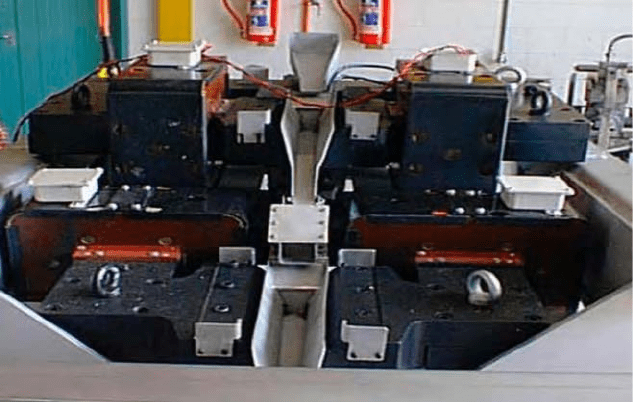
546 CHAPTER 6. INDUSTRIAL APPLICATIONS
Figure 6.65: A two-stage ferrohydrostatic separator for the recovery of dia-
monds.
the sorthouse feed and tailings are some of the applications.
In addition to diamond recovery, ferrohydrostatic separators are used for
the treatment of geological samples. Mass reduction of samples before hand-
sorting, sorting of indicator minerals into individual narrow density fractions
and replacement of toxic and expensive heavy liquids are the main benefits.
The Rhomag
R
°
ferrohydrostatic separator, developed at De Beers and shown in
Fig. 2.109, is used for treatment of exploration materials.
As a result of the ability of FHS to separate materials into narrow, well-
defined density fractions over a wide range of densities, using a single fluid
density, which can be changed by varying the magnetic field strength, the tech-
nique is particularly suitable for densimetric analysis. Densimetric analysis of
the DMS feed and products by FHS allows to set the operating conditions of
DMS and to assess its e!ciency. Caution must, however, be exerted to take
into account the magnetic properties of the material. As has been discussed in
Section 3.8.4, particles with non-zero magnetic susceptibility exhibit an eective
density dierent from their natural density. A failure to take into account this
increment in density would result in distortion of the density distribution of the
material.
6.7.3 The fractionation analysis of coal
Sink-and-float analysis of coal has been one of the areas of potential applica-
tions of FHS. Densimetric analysis of coal is usually carried out in bromoform

6.7. THE APPLICATIONS OF FERROHYDROSTATIC SEPARATION 547
Table 6.35: Comparison of densimetric analysis of coal in heavy liquids and FHS
[G17]. Concentration of impurities in FHS fractions is shown as a
dierence (in heavy liquids.
Separation density Size fraction [mm] Concentration
of impurities
[%]
2100 kg/m
3
- 100 + 50 0
-50+25 0
-25+13 0.7
-13+1 1.8
1800 kg/m
3
- 100 + 50 0
-50+25 0
-25+13 0.9
-13+1 1.4
and aqueous solutions of zinc chloride. Both heavy liquids are toxic and expen-
sive to acquire and to dispose of. Such a hands-on operation, involving several
liquids, to cover the entire density region from 1800 to 2400 kg/m
3
is tedious
and environmentally unfriendly. The obvious advantage of using magnetic flu-
ids to separate coal into narrow density fractions has been appreciated, over
the last twenty years, by numerous researchers. Gubarevich [G17] employed a
ferrohydrostatic separator with kerosene-based ferrofluid to investigate the frac-
tionation of coal, ranging from 1 to 100 mm in size. The results, shown in Table
6.35, were compared with densimetric analysis obtained with heavy liquids.
It can be seen that while the best results were obtained with the coarse
fractions, even in the fine fractions the concentration of impurities was low.
The selectivity of separation was found to be high, with Hs ranging from 0.015
to 0.045, depending on the ferrofluid density. The high accuracy of separation is
assisted by the fact that most coals are very feebly magnetic ("
frdo
=
25×10
9
m
3
/kg). It was also observed that chemical interaction between the ferrofluid
and organic and mineral matter in the coal was negligible.
Based on the above experiments, an industrial-scale continuous FHS sepa-
rator (FGS-2) was developed by the GMUO Institute, Lugansk, the Ukraine.
The separator, shown in Fig. 6.66, underwent several pilot-plant tests, with
duration of each exceeding 600 hours. Typical results are summarized in Table
6.36. In spite of satisfactory performance, several attempts to commercialize
this technology failed as a result of geopolitical changes in the former USSR at
that time.
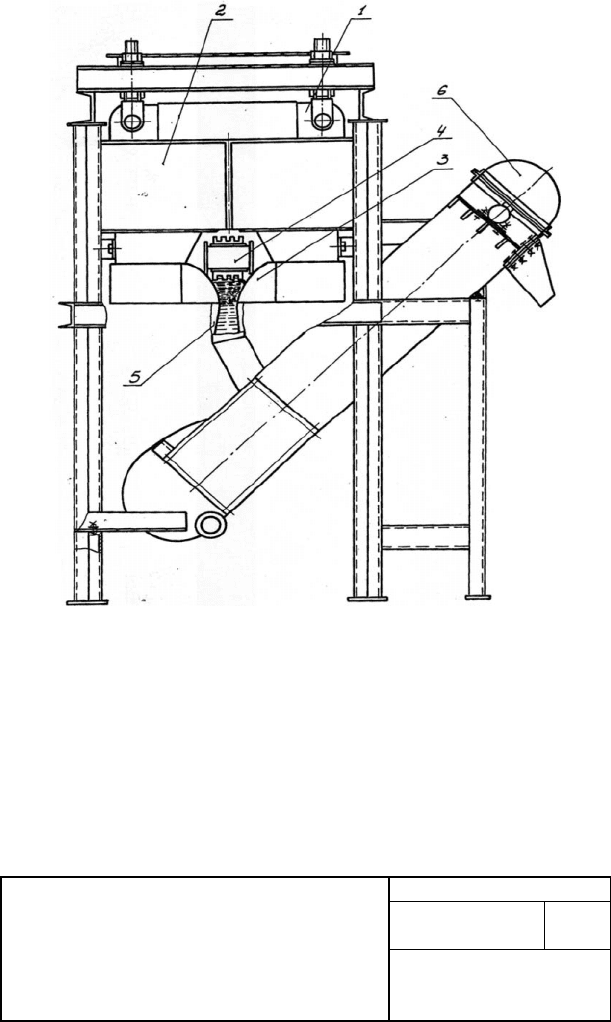
548 CHAPTER 6. INDUSTRIAL APPLICATIONS
Figure 6.66: FGS-2 separator for fractionation of coal. 1-electromagnet, 2-coils,
3-pole-tips, 4-hopper, 5-bottomless separation chamber with hy-
draulic support, 6-lift.
Table 6.36: Typical results of pilot-plant-scale densimetric analysis of coal using
FGS-2 [G17].
Density range 1300 to 2200 kg/m
3
Cross-contamination [%] of FHS products - 100 + 13 mm 0.5%
-13+1mm 2%
Throughput 200 kg/h
Carry-over of ferrofluid into products 1to4kg/t
Loss of ferrofluid after regeneration 0.4 kg/t
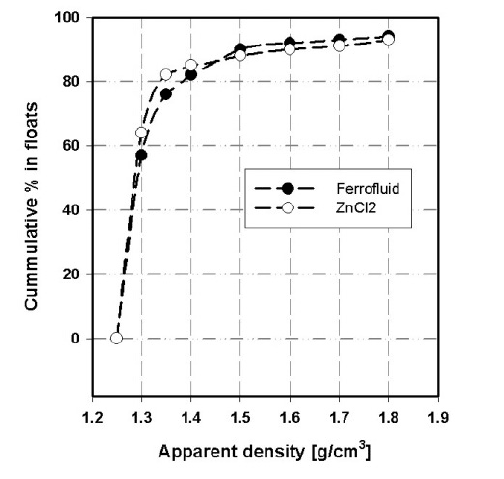
6.7. THE APPLICATIONS OF FERROHYDROSTATIC SEPARATION 549
Figure 6.67: Comparison of densimetric analysis of coal using FHS and ZnCl
2
.
Particle size: - 3 + 0.3 mm (adapted from Fujita et al. [F34]).
Fujita et al. [F34] described the design of a batch ferrohydrostatic separator
for densimetric analysis of coal. The results, an example of which is shown
in Fig. 6.67 were encouraging. The separation curves for three size fractions,
namely - 25 + 13 mm, - 13 + 3.3 mm and - 3.3 + 0.3 mm were similar for
both separation methods, namely FHS and zinc chloride. The carry-over of the
water-based ferrofluid into the products of separation was less than 5 kg per
tonne of the feed material, in agreement with the value given by Gubarevich
[G17]. Further regeneration of the ferrofluid reduced the loss to about 0.5 kg/t.
Ferrohydrostatic separators can thus be used as accurate tools for densi-
metric analysis of coal. FHS lends itself to automation, the rate of treatment
is high and the detrimental eect of chemical and physical interaction of the
heavy liquids with the coal matter is reduced. FHS thus possesses numerous
advantages compared to conventional methods. As has been discussed by Svo-
boda [S93], further development of FHS technology that will result in more
accurate and large-scale equipment for coal fractionation and in availability of
cost-eective ferrofluids, combined with strong interest of the coal preparation
fraternity, will inevitably result in the introduction of the FHS technique to the
coal fractionation practice.
